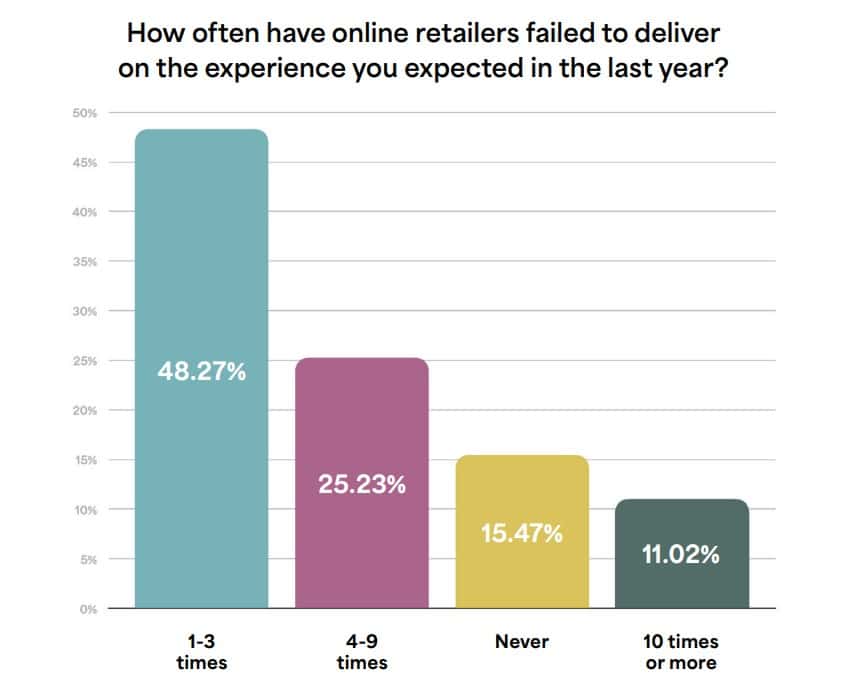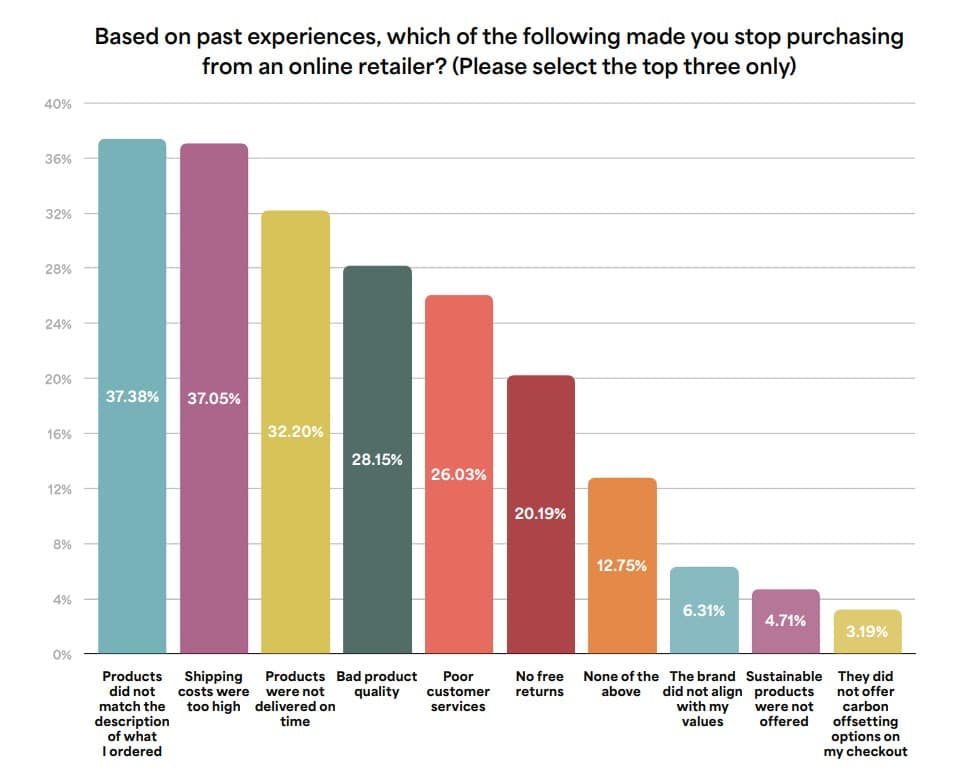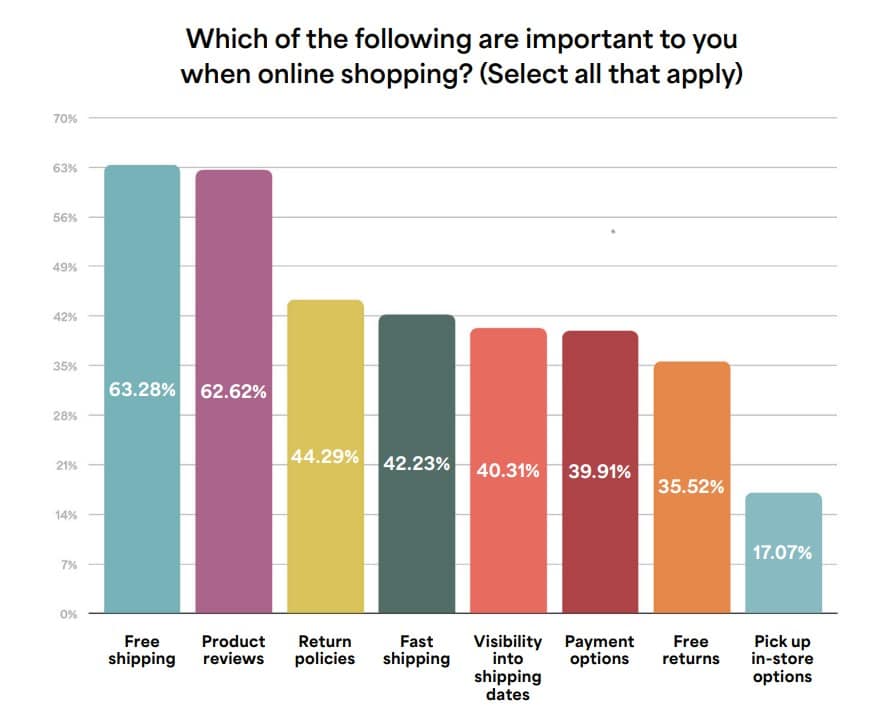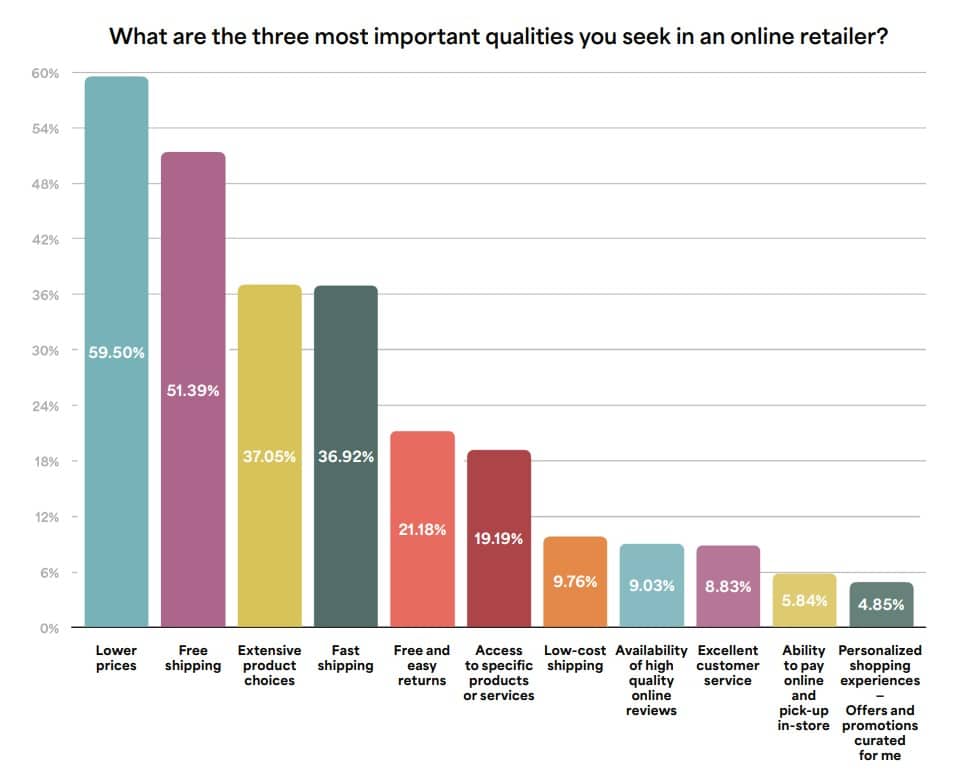What will it take to give consumers the experience they want in a transactional exchange? Are they just too picky? Or are most brands and businesses simply unable to put together a seamless process on their purchase pages and customer service interactions? It must be immensely more difficult than consumers think, because online retailers around the globe are struggling mightily to meet their rising expectations, affirms new research from integration-platform-as-a-service (iPaaS) Celigo.
The firm’s 2024 Online Retail Trends Report, based on a survey of over 1,500 U.S. and U.K. consumers about their recent online shopping experiences, as well as preferences, habits and purchasing plans for 2024, reveals that an astounding 88 percent of U.S. and 79 percent of U.K. shoppers said that online retailers failed to meet their expectations at least once in the past year, citing increased pricing, late deliveries and excessive shipping costs as their primary frustrations. Just as concerning for retailers, inflation and higher prices remain the No. 1 concern for global consumers with 42 percent of U.S. and 44 percent of U.K respondents planning to shop less online because they need to tighten their budgets.

“Shoppers expect more from online retailers, demanding free guaranteed on-time shipping and deeper price deals and discounts—or else they will purchase elsewhere,” said Mark Simon, vice president of strategy at Celigo, in a news release. “To fulfill these raised expectations, online retailers must improve e-commerce operations, back-office integration and omnichannel selling strategies well before the Holiday 2024 season begins.”
The researchers also found there is a significant difference in online shopping sentiment across generations. While one third of Baby Boomers across the globe reported flawless online shopping experiences in 2023, Gen Z—which will gain $2 trillion in purchasing power within the decade and emerge as the most dominant shopping demographic—reported the greatest dissatisfaction with online shopping. In fact, 92 percent of Gen Z respondents in the U.S. and 85 percent in the U.K. had at least one negative online retail transaction within the past year.

“This report validates what we’ve been seeing in the market, especially around more consumers using social media to research purchases,” said Yash Murali, chief technology officer at Therabody, in the release. “Therabody is as committed to engineering our science-backed products as we are to streamlining and optimizing every step of the discovery and purchase experience for our customers. So, not only do we want our presence to be felt across platforms from search engines like Google to marketplaces like Amazon and social media channels like TikTok, but we also want to provide our customers a seamless shopping experience.”

In addition to the disappointing shopping experiences in 2023, the research also exposed the most important qualities consumers seek in online retailers, how they research and buy products, and their spending intentions for the holidays in 2024, including:
- U.S. shoppers cited lower prices (59 percent), free shipping (53 percent) and fast shipping (33 percent) as the three most important offerings when choosing an online retailer. Conversely, the top reasons consumers would cease the buying relationship with a vendor were receiving products that do not accurately match their descriptions (39 percent), excessive shipping costs (38 percent) and late deliveries (32 percent).
- 71 percent of respondents said they will spend as much or more online during the 2024 holiday shopping season than they did in 2023. Consumers stated convenience (52 percent), greater access to product offerings (48 percent) and lower prices (34 percent) were their primary reasons for shopping online as opposed to brick-and-mortar retail stores.
- In addition to the traditional peak shopping periods surrounding Black Friday and Cyber Monday, spring and summer shopping events will boost online retail sales. More than 40 percent of survey respondents said they will be seeking out online deals for Mother’s Day and Father’s Day, while 37 percent said they will visit websites and digital marketplaces for summer vacations.
- 60 percent of consumers rely heavily on product reviews found on retailers’ websites when making their final purchasing decision, while 41 percent turn to third-party review sites. Discerning shoppers are scouring the internet for the best deals and products, with 35 percent saying they research multiple retailers and more than 20 percent turning to marketplaces such as Amazon or eBay to compare pricing options.
- In the U.S., more than 70 percent of Gen Z shoppers rely on social media and TikTok to research the products they buy. Nearly 60 percent of this consumer demographic chooses Amazon as their top research method while 52 percent use search engines like Google.
“We have seen the trend of customers researching in different places than where they may buy,” said Zachary Horton, senior director, logistics, supply & demand planning at Ember Technologies, in the release. “It’s more important than ever that brands assess all their channels and ensure the information is clear and consistent, driving customers from research to purchase.”

Data shows retailers what to prioritize to woo shoppers
The research provides retailers with a roadmap to boost sales and consumer loyalty as well as win during the holiday season 2024. The data indicates that online retailers should invest in new technologies and approaches that deliver the most important criteria for shoppers, including personalized offers with deals and discounts, fast free guaranteed-on-time shipping and easy access to product reviews. Here are five strategies they must embrace:
Drive omnichannel 24/7
- Deliver a consistent and connected experience across all channels as different shopping demographics research and purchase products in different ways
Extend operational efficiencies
- Create efficiencies in all aspects of the buying process through automation, particularly by integrating both front and back-office operations. This enables retailers to provide fast, accurate shipping, with products that meet buyer expectations. Online retailers also need to
Get personal leverage integration
- This will allow them to get valuable data on consumer purchasing habits and connect all systems for targeted marketing campaigns.
Serve Gen Z
- Engage in social selling and ensure that product information on social media sites is accurately reflected on other channels and leverage user generated content from social media on owned online retail websites to build trust and create a seamless buying journey.
Plan for the holiday season now
- Start the integration process now as siloed systems will impair customer experience. Ensure e-commerce systems can handle higher volumes and stress-test new integrations now to avoid logistical issues before Holiday season begins.








